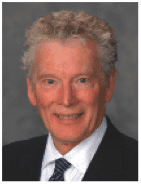By Dennis Van Vliet, AuD
The Greek philosopher Epictetus is credited with saying, “We have two ears and one mouth so that we can listen twice as much as we speak.” The connection between the ears and the mouth is often discussed in this context. This week, however, I’ve been thinking more about the physical connection of the ears and the mouth. Specifically, I’ve been concerned with the effect on the ear canal when the mouth is opened vs closed.
There is a good body of research about the dynamic changes in the ear canal as a result of jaw movement. Robert Oliviera, PhD, in particular, has contributed to this knowledge base (eg, see his article “The Dynamic Ear Canal and Its Implications” in the February 2005 HR). Oliviera and others have shown that not every ear canal moves with mandibular action, and when they do, it is not always in the same direction. Given this fact, what should our approach be when trying to obtain an accurate impression of the ear?
Given that not every ear behaves the same with jaw movement, should we adopt a standard procedure for impressions? For example: jaw open, jaw closed, or relaxed jaw? I think it depends on the type of product being fabricated from the impression, along with what happens in the ear canal. My opinion is that there shouldn’t be a single method, but that we can and should develop a simple protocol that takes into account the variability of different ears and products that need impressions.
I’d like to propose topics to consider for any protocol that might be considered:
The product. The function of the final product to be custom made for the user is important to keep in mind. If we are concerned with the acoustic seal for a hearing aid, earplug, or monitor to be used in noisy environments, the ear canal is where the seal will be created. The superstructure in the concha and helix is really only for retention and alignment. We can add or remove the superstructure as needed. If we are making a small product like an invisible-in-the-canal (IIC) hearing aid, there isn’t the superstructure for retention, and we need to pay attention to the dynamics of the ear canal, along with the anatomy of the ear. I don’t pretend to have the skills to design a shell, but I can report what I see so that the modelers can assess the shape and dynamics and design accordingly.
Otoscopy. A requirement for any impression is a good visual inspection. The dynamics of the ear are simple enough to elicit. We should simply ask the patient to open and close their mouth so that we can observe what happens and include the information on the order. When preparing for a deep impression where the cotton dam is thinned and placed directly on the eardrum, taking extra care to view and note the detail of the full length of the ear canal is essential for placement of the dam.
Assess dynamics. Simply adding the step of asking the patient to open and close their jaw, and noting if there is movement, where the movement is, and to what extent the canal wall moves can be very important. If the movement is extensive, providing two impressions—open and closed jaw—may improve the chances of a better design.
Document for lab. Noting our observations and communicating the details puts the designers in a much better position to consider the dynamics and come up with a design that maintains a seal, security, and comfort. Using a felt marker to note on the impression where the movement is occurring can be an effective way to document the dynamics.
I was recently asked to help with a problematic IIC fit. The patient complained that one of her hearing aids migrated out after a time, creating an annoyance, although feedback and comfort otherwise were not a problem. There had been several attempts at remakes that had not solved the problem. One consistent factor was that the impressions were taken with a bite block because the clinician had noted that the ear canal opened up quite a bit with jaw movement.
My recommendation was to change the impression to a closed jaw condition to provide additional information for the lab. I theorized that the extensive movement may have pushed on the shell in the closed jaw position, creating an outward pressure that loosened the fit.
After receiving this input, the lab’s response was to loosen the fit in the active area, and seek an acoustic seal in other areas. How the fit works out is yet to be determined, but the lab is now working with additional information, and may be a step closer to a satisfactory fit.
The Final Word? The ear canal can be a very dynamic environment. We, in response, need to be dynamic in our approach to gathering the information necessary for an effective fitting. A unique service that we can offer in our practices is the customization of a fitting that cannot be duplicated in an online order or an off-the-shelf product. We should take pride in that service and ensure that our role is effective.

|




